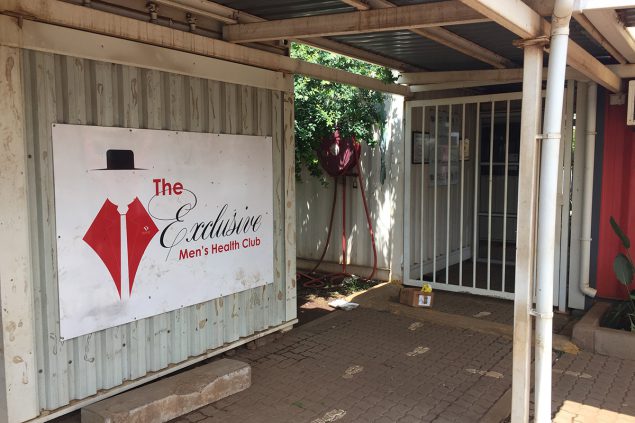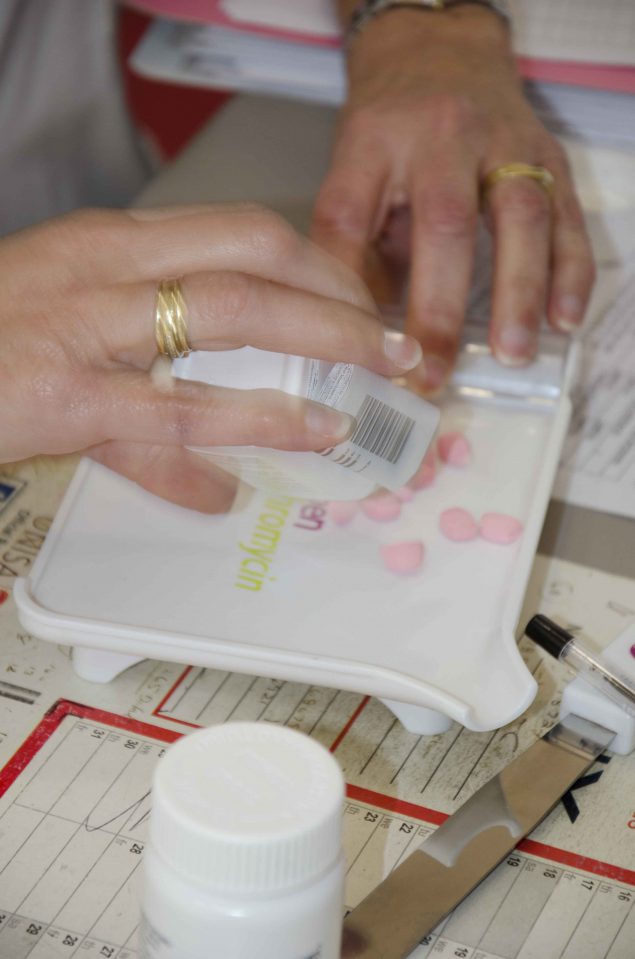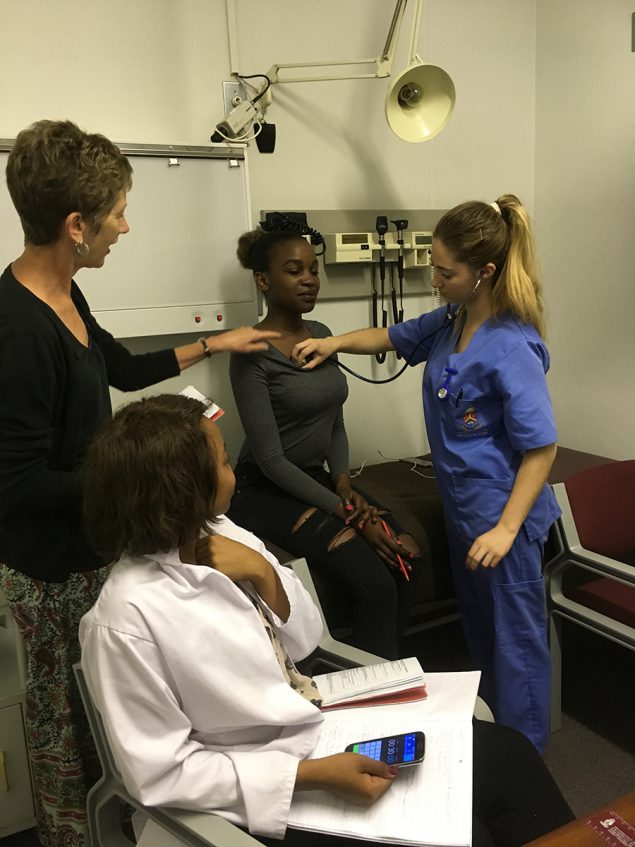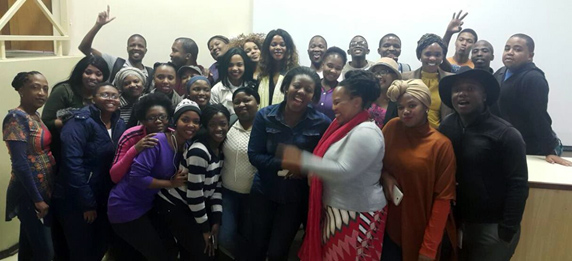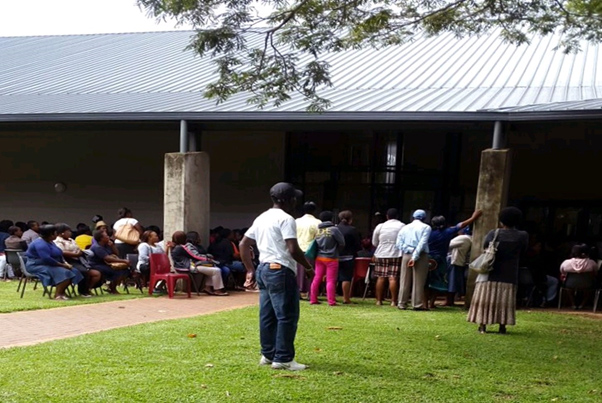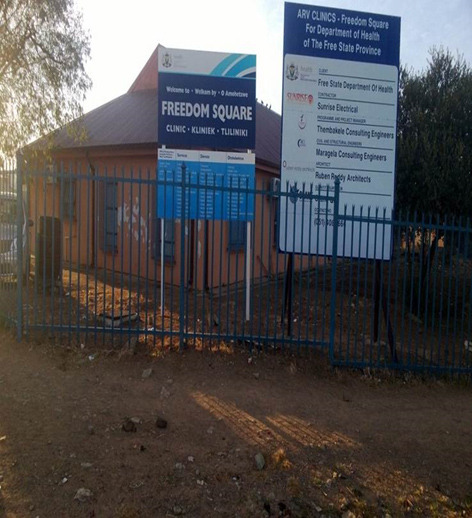Success Stories
Did you know that the best way to reduce new HIV infections is to ensure patients remain on treatment and become virally suppressed?
An innovative case management approach, introduced by Health Systems Trust (HST) in uMgungundlovu District, South Africa, is helping patients to stick to their treatment, and become virally suppressed.
uMgungundlovu district in KwaZulu-Natal currently has the highest HIV prevalence in the world.
I know the symptoms of TB because I studied it in LO (Life Orientation) class at school. I was still very sick so I went to the clinic and the nurses asked about my symptoms and gave me a sputum test. When the results came back, they said I had TB. They also tested for HIV but luckily I am negative. They also found I had gout in my shoulder and feet from TB.
The World Health Organization (WHO) is determined to see the virtual elimination of TB and HIV by 2030. According to the 2018 WHO Global TB Report, approximately 322, 000 people contracted TB in South Africa in 2017. This speaks to the concept of “TB ANYWHERE IS TB EVERYWHERE”, underscoring the need to gain control TB and HIV among key populations, if we are ever to eliminate them in the general population.
The impact of peer navigation was most evident around helping patients overcome stigma-related barriers, in order to disclose, elicit social support, and make prevention decisions.” Jessica Grignon, Director of Programs at I-TECH South Africa.
The first study in African to assess the HIV prevalence in transgender women was launched in East London in the Eastern Cape, South Africa on January 10, 2018. The BotsheloBaTrans study, which celebrates the resilient spirit of transgender women who face constant discrimination from society…
South African field staff are often baffled by the lack of interest in voluntary medical male circumcision (VMMC) among men. Convincing boys 10–14 is often easy, but convincing men, particularly those over 21, is an uphill battle.
Has the Determined, Resilient, Empowered, AIDS-Free, Mentored, and Safe (DREAMS) program had any impact on the rate of new HIV infections in adolescent girls and young women (AGYW) in South Africa since it was launched in November 2015? That is the big question that CDC South Africa and its partner, Epicentre, are hoping to answer by the end of 2018.
Lejweleputswa District in Free State Province, South Africa, lies amid the famed goldfields, flanked by vast agricultural holdings producing maize and sunflowers that stretch from horizon to horizon. Like the rest of the country, the region is grappling with unemployment, poverty, and the devastating effects of the AIDS and TB epidemics.
The lifelong commitment to ART is part of the plan outlined in the South African National Adherence Guidelines of 2016. Health care workers (HCW) at the health care facility should help patients develop an adherence plan that will ensure they remain in care, will adhere to ART treatment, and will achieve viral suppression.
Social change is brought about through education and through getting the buy-in from leaders and influential people. This was the reason that the Wits Reproductive Health Institute (WITS RHI) rolled out the PAVING project at selected Technical and Vocational Education Training Colleges in South Africa.
“It was evident that the SA program had strong collaborative relationships among implementing partners. This is an area the Kenya program will be focusing on to ensure we draw synergy from the strengths of each implementing partner. Also, the PWID program in SA has hinged its strategy on public health approach (e.g., harm reduction, needle pick-up at Basheba site) and not just HIV prevention. These are simple and applicable elements that the Kenya program can apply to ensure we scale up our coverage in PWID programming,” Mr. Wyckliffe Obwiri, Public Health Specialist for Key and Priority Populations in CDC Kenya.
There’s an old saying: “If you empower a woman, you empower a nation.” This saying resonates with Muriel Madondo, a young woman from Umlazi Township, south of Durban in KwaZulu-Natal province, South Africa. Muriel’s strong desire to know more about HIV led to her becoming a DREAMS Ambassador (a community health advocate) and later a Girls Club Mentor employed by the U. S. President’s Emergency Plan for AIDS Relief (PEPFAR)-supported Community Media Trust (CMT)…
Siyayinqoba (Beat It!) is a television show developed and produced by CMT. It was the first TV show created for people living with HIV in South Africa and was instrumental in advocating for antiretroviral drugs to be made available in the public health sector. Over the years the show has also played an important role in changing perceptions and reducing HIV stigma.
“Events like these are not just about numbers and targets, but they are about bringing people together and ensuring that everyone in the community has access to quality screening and linkage to health care.” Dr. Amy Herman-Roloff, CDC South Africa Country Director.
When Nokwazi Ndlovu* from Umlazi Township, south of Durban in KwaZulu-Natal, South Africa was raped by her stepfather she told her mother, but her mother didn’t believe her. Instead, she allegedly defended him saying he would never commit such a heinous act.
“We have seen a shift in how inmates and officials now openly talk about sex, sexual violence and HIV at Zonderwater. HCT uptake is also on the rise as inmates understand that HIV is not a death sentence, and there are peer educators who are there to support them. Condoms are also now widely accessible, something that never happened in the past.” Mr. Masizole Gonyela, Prevention Program Manager at SA Partners
“To have over 20 homeless PWID on ART and to achieve viral suppression with more than half of them is a success because these are people whom one would expect to struggle with adhering to treatment due to the conditions in which they live,” said Angela McBride, PWID Project Coordinator.
“Looking at data four or five months in arrears is insufficient. The idea is to put yourself closer to the data for immediate identification of progress and required corrective action.” Patrick Nadol, Branch Chief, Epidemiology and Strategic Information, CDC South Africa.
Like many countries in sub-Saharan Africa, South Africa is faced with a dire shortage of qualified health workers. The country is home to more than 51 million people, yet has fewer than 40,000 medical practitioners. About 75 percent of those work in the private health sector…
Recognizing that achieving sustainable control of the HIV epidemic in South Africa depends on building a workforce of well trained, clinically competent nurses, the Health Resources Services Administration (HRSA), a U.S. Government agency participating in the United States Presidents’ Emergency Plan for AIDS Relief (PEPFAR)…
A significant improvement of performance of facilities supported by Beyond Zero was reported by the quality improvement assessment conducted periodically at supported sites. The improvement strengthens the nurse’s morale and confidence in managing HIV and TB clients…
Betty Sithole hurried to board the taxi so that she could reach the clinic before it closed. To finish earlier than usual, she had rushed through her day’s chores as a domestic worker in the suburb of Kloof in KwaZulu-Natal Province. Betty and her friends had often discussed the “Know your status” billboards…
HST sharing and learning to keep people treated and cared for Over 60 people crowded into the Modimolle Municipality’s Boardroom in Limpopo Province’s Waterberg District. In addition to an excellent turnout of community members, some participants were attending in their working capacities or representing governance structures in the district, such as the Local AIDS Council…
An old man sitting outside Empathe Clinic in Dundee was remarking to casual listeners that far fewer community members were waiting for services, both within and outside the facility. Was this not proof, he asked, that the nurses were chasing patients away…
Lerato Tshabalala was struggling with a persistent cough, which was not uncommon at her school, especially during the winter months. Her grandmother, with whom she had lived since her mother’s death, encouraged regular school attendance towards getting…
Men find it hard to go to a clinic when sick because they’re taught from a young age to be strong and persevere. They only end up getting help when the health condition is at its worst stage. Guys find it more difficult to go for an HIV test…
- DREAMS Event Features Guest Speaker Oprah WinfreyPOSTED DECEMBER 3, 2016
- Empowering young women to have #BigDREAMSPOSTED OCTOBER 11, 2016
- TB2016: Where to from here?POSTED SEPTEMBER 20, 2016
- 2016 SAFETP Graduates Largest Class to DatePOSTED JUNE 1, 2016
- U.S. Ambassador Patrick Gaspard and Minister of Health Dr. Aaron Motsoaledi Celebrate One-Year Anniversary of MomConnect and Launch Youth Mobisite, B-WisePOSTED OCTOBER 26, 2015
- 2015 SAFETP Graduates Setting the StandardPOSTED JUNE 29, 2015
- A Fellows South African ExperiencePOSTED JANUARY 16, 2015
- PopART intervention rolls out into communitiesPOSTED DECEMBER 11, 2014
- At risk in paradisePOSTED DECEMBER 11, 2014
- Access is everythingPOSTED DECEMBER 11, 2014
- Rise, young women, risePOSTED DECEMBER 11, 2014
- Study to determine effectiveness of HIV prevention and treatment launchedPOSTED OCTOBER 7, 2014
- Closing the Loop in Medical Diagnostic Laboratory Testing PhasesPOSTED AUGUST 7, 2014
- CDC Sings the SLMTA song with NHLSPOSTED AUGUST 7, 2014
- A Positive ResultPOSTED AUGUST 7, 2014
- Back to the BasicsPOSTED JULY 1, 2014
- We have a winner!POSTED JUNE 30, 2014
- U.S. Departments of Health and Human Services and Health Resources and Services Administration Senior delegates visit partner supported sites in South AfricaPOSTED MAY 12, 2014
- Over 80 000 reached in a 3 day health screening campaign across South AfricaPOSTED MAY 12, 2014
- CDC South Africa celebrates World TB Day with NICD/NHLSPOSTED MAY 7, 2014
- Dr. Adam L. Cohen nominated for prestigious Charles C. Shepard Science AwardPOSTED APRIL 8, 2014
- Associate Professor Before 29 YearsPOSTED FEBRUARY 6, 2014
- Ambassador Gaspard hands over R 3.5 million CDC-funded medical equipmentPOSTED JANUARY 17, 2014
- Partnerships Bolster African LabsJULY 30, 2013
- CDC South Africa is Proud to Announce the Recent Graduates of the South African Field Epidemiology and Laboratory Training ProgramPOSTED APRIL 24, 2013
- ASLM 2012, Addressing the Fundamental Strengthening of Laboratory Systems to Improve Healthcare and Save Lives in AfricaPOSTED DECEMBER 12, 2012
- Winnie Mandela Male Sexual Health Clinic Celebrates its 10,000th Circumcision in 2012POSTED NOVEMBER 26, 2012
- FELTP Graduates Are Ready to Serve Public Health in South AfricaPOSTED NOVEMBER 26, 2012
- The ‘Lab in a Bag’ PIMA Machine Brings Life-saving Treatment One Step Closer to People Living with HIVPOSTED NOVEMBER 26, 2012
- GeneXpert’s Speedy Diagnosis gets Patients onto TB Treatment QuickerPOSTED NOVEMBER 26, 2012
- Circumcised patient praises the McCord Hospital in Durban, South AfricaPOSTED NOVEMBER 26, 2012
- Siyayinqoba: Beat It! Conquers Fear of HIV Testing POSTED AUGUST 2, 2012
- PMTCT: A Winnable Battle in South AfricaPOSTED DECEMBER 5, 2011
- Providing Treatment for Migrants in South Africa – Community AIDS Response works with the most needy at Johannesburg Central Methodist ChurchPOSTED OCTOBER 6, 2011
- SANBS South African Transfusion Medicine Training CenterPOSTED OCTOBER 6, 2011




